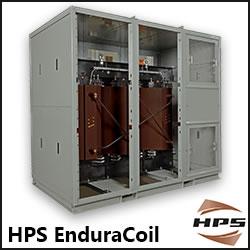The Top 10 Things Everyone Gets Wrong About PV Ribbons & Solar Interconnects (And What You Really Need to Know)
These little connectors are like the backstage crew at a rock concert — unnoticed, underappreciated, but absolutely essential. Without them, your solar panel is just fancy glass sunbathing on the roof.
Let's face it — when people think "solar technology," they imagine futuristic panels, AI-powered inverters, and maybe a cool drone doing thermal inspections.
Almost nobody thinks about the thin metallic strips quietly doing all the heavy electrical lifting:
PV ribbons and solar interconnects.
These little connectors are like the backstage crew at a rock concert — unnoticed, underappreciated, but absolutely essential. Without them, your solar panel is just fancy glass sunbathing on the roof.
So today, we're clearing the air (and maybe breaking a few myths) with the 10 things people consistently get wrong about PV ribbons and solar panel interconnection materials.
Why I'm Qualified to Talk About PV Ribbons (EEAT Flex)
I've spent years working directly with solar PV interconnect materials, module assembly processes, solder joints, micro-crack diagnostics, and even those painfully thin busbar ribbons that snap if you breathe too hard near them.
I've tested them. Broke them. Installed them.
And once dropped a reel of ribbons on my foot. (10/10 pain. Do not recommend.)
So yes — this is experience speaking, not copy-paste solar hype.
🔟 What People Get Wrong About PV Ribbons — And the Real Truth
1️⃣ "Ribbons are just there for decoration."
Nope. They're not solar jewelry.
They're the electric highways that carry current between cells.
No ribbons = no electricity.
No electricity = sad customer + warranty claim.
2️⃣ "All PV ribbons are the same."
Absolutely not.
There are:
Flat ribbons
Wire ribbons
Light-capture ribbons
Ultra-soft flexible ribbons
Low-temperature ribbons
High-conductivity ribbons
Choosing the wrong one is like using USB-A when you needed USB-C.
Keyword: PV ribbons
3️⃣ "Coating thickness doesn't matter."
Oh, it matters.
A LOT.
Tin and tin-silver coatings determine:
Solderability
Bond strength
Longevity
Thermal performance
Too much or too little, and your solder joints behave like moody teenagers — unpredictable and easily cracked.
4️⃣ "Busbar ribbons don't affect efficiency."
They can increase efficiency by reflecting light back into the cell.
Yes — the ribbon literally gives the cell a second chance to catch photons.
That makes solar PV busbar ribbons one of the cheapest efficiency upgrades in a module.
5️⃣ "Ribbons don't influence panel lifespan."
Interconnect failure is one of the top contributors to:
Hot spots
Cell cracks
Power loss
Early degradation
If solar panels had medical reports, "interconnect fatigue" would be the chronic issue.
6️⃣ "Stiffness doesn't matter."
A too-stiff ribbon can cause:
Micro-cracks
Solder fatigue
Delamination
Modern PV interconnect materials are engineered for flexibility so they can breathe with the expansion and contraction of temperature changes.
Your panel does yoga daily — the ribbons must too.
7️⃣ "Soldering is easy."
Nope.
Soldering interconnects requires:
Precise temperature
Controlled pressure
Proper wetting
Zero voids
Perfect alignment
It's basically surgery — but hotter, faster, and with metal instead of organs.
8️⃣ "All panels use the same interconnect system."
Technology is moving fast:
TOPCon → needs special low-temp ribbons
HJT → demands ultra-flexible, low-stress ribbons
Shingled cells → use wire interconnects
Tandem cells → sensitive to heat
If you install the wrong ribbon… well, let's just say "performance drops faster than my phone battery at 5%."
9️⃣ "Ribbons don't evolve."
They're evolving faster than your favorite smartphone:
Laser-soldered ribbons
Zero-busbar designs
Multi-wire interconnects
Conductive adhesives
Reflective coatings
Ultra-thin alloys
The race for efficiency doesn't stop at the cell level — ribbons are getting smarter too.
🔟 "Without ribbons, the panel would still work."
No. Nope. Never.
A solar panel without interconnects is just a really expensive roof ornament.
Solar interconnects = Functional electricity.
Without them, your solar module is basically on a permanent holiday.
Conclusion: Time to Appreciate the Real MVPs of Solar Panels
PV ribbons and solar interconnects aren't glamorous, but they're essential.
They:
Carry current
Boost efficiency
Protect cells
Reduce micro-cracks
Improve reliability
Help the panel survive 25 years of heat, cold, wind, and rain
So next time someone brags about their solar panel efficiency, ask them:
"Cool, but what ribbons does it use?"
This is how you instantly sound like the smartest person in the room — trust me.
And remember:
"Whether you're in solar for the engineering, the environment, or just to show off at parties, PV interconnects are the reliable friends who keep everything connected — literally."
Bring curiosity. Bring humor.
The solar industry is full of surprises — especially the shiny metal ones.
Featured Product

HPS EnduraCoilTM Cast Resin Medium Voltage Transformer
HPS EnduraCoil is a high-performance cast resin transformer designed for many demanding and diverse applications while minimizing both installation and maintenance costs. Coils are formed with mineral-filled epoxy, reinforced with fiberglass and cast to provide complete void-free resin impregnation throughout the entire insulation system. HPS EnduraCoil complies with the new NRCan 2019 and DOE 2016 efficiency regulations and is approved by both UL and CSA standards. It is also seismic qualified per IBC 2012/ASCE 7-10/CBC 2013. Cast resin transformers are self-extinguishing in the unlikely event of fire, environmentally friendly and offer greater resistance to short circuits. HPS also offers wide range of accessories for transformer protection and monitoring requirements.
